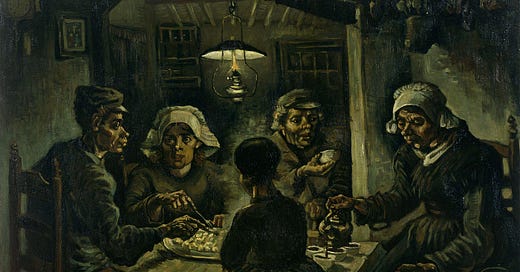Debunking the ‘Starving Artist’ myth: art & success
The starving artist is a relic of the past; today’s artists have every reason to thrive.
Believing in the myth of the starving artist is also a self-fulfilling prophecy. When aspiring artists have this distorted belief, they accept little or no money for their work, the rest of society gets creative work done too cheaply, and as a consequence, other artists have a harder time charging appropriately.
Chase Jarvis in The Myth of the Starving Artist
The notion of the “starving artist” has long dominated cultural narratives, painting a grim picture of creative individuals struggling with a tortured lifestyle; characterized by financial struggle.
However, this myth is both outdated and harmful; it discourages potential artists and undervalues creative work.
The “starving artist” myth is particularly harmful since it causes artists to accept underpayment, perpetuating a cycle where undervaluing creativity becomes the status quo.
We must break free from this narrative by rejecting the myth of inevitable artistic struggle and embracing a thriving mindset.
First, however, we must understand where the myth comes from.
Throughout history, artists like Van Gogh and Michelangelo have been the “iconic” starving artists. However, if you look closely at their stories, you will find that neither was poor or lacked the means to provide for himself. Van Gogh received a monthly income from his brother, who acted as a patron, and Michelangelo was anything but poor. This clearly shows that art and financial success can coexist.
So, why does this myth persist?
Society has been seduced by the romantic notion of financial sacrifice for the sake of inspiration and talent.
This romanticized notion can be traced back to Murger’s published Scènes de la Vie de Bohème in 1847, a collection of stories that playfully romanticized poverty. His work became incredibly successful, inspiring later pieces like Rent and Moulin Rouge. Therefore, the media has reinforced the now-common belief that artists are unfortunate Bohemians who struggle at the lowest end of society.
On top of that, when an artist does succeed, their achievements tend to be dismissed as luck rather than skill or hard work.
In reality, many artists thrive by adopting entrepreneurial mindsets and diversifying their income streams. They often explore teaching, collaborations, commissions, and even adjacent fields to maintain themselves.
Embracing this multifaceted approach aligns with the mindset of the “thriving artist,” who actively cultivates opportunities, builds networks, and markets their work.
This proactive approach is crucial because waiting to be “discovered” as a creative is rarely effective.
Success in the arts, like any business, requires strategy, effort, and a willingness to engage with the market. Artists who align themselves with patrons, foster collaborations, and remain adaptable often find financial stability and fulfillment in their careers.
“Career success is a combination of achieving a reasonable level of financial stability while doing work you enjoy and then finding that you are also happy and fulfilled with your life and career choices as well.”
Terina Allen in A Definition Of Career Success
Statistics further debunk the starving artist myth. Data from arts alumni shows that 92% of graduates are gainfully employed, with a significant proportion working within creative fields.
Ultimately, we must remember that being an artist means dedicating time to meaningful work, taking ownership of your craft, and rejecting the notion that success in the arts is a matter of luck or compromise.
By reframing the artists’ story as one of possibility rather than limitation, we can inspire a new generation to pursue their creative dreams with confidence and ambition.
The starving artist is a relic of the past; today’s artists have every reason to thrive.
What does it mean to be a “real artist”? It means you are spending your time doing the things that matter most to you. It means you don’t need someone else’s permission to create. It means you aren’t doing your work in secret, hoping someone may discover it someday. It means the world is taking your work seriously.
– Jeff Goinsin Real Artists Don’t Starve







